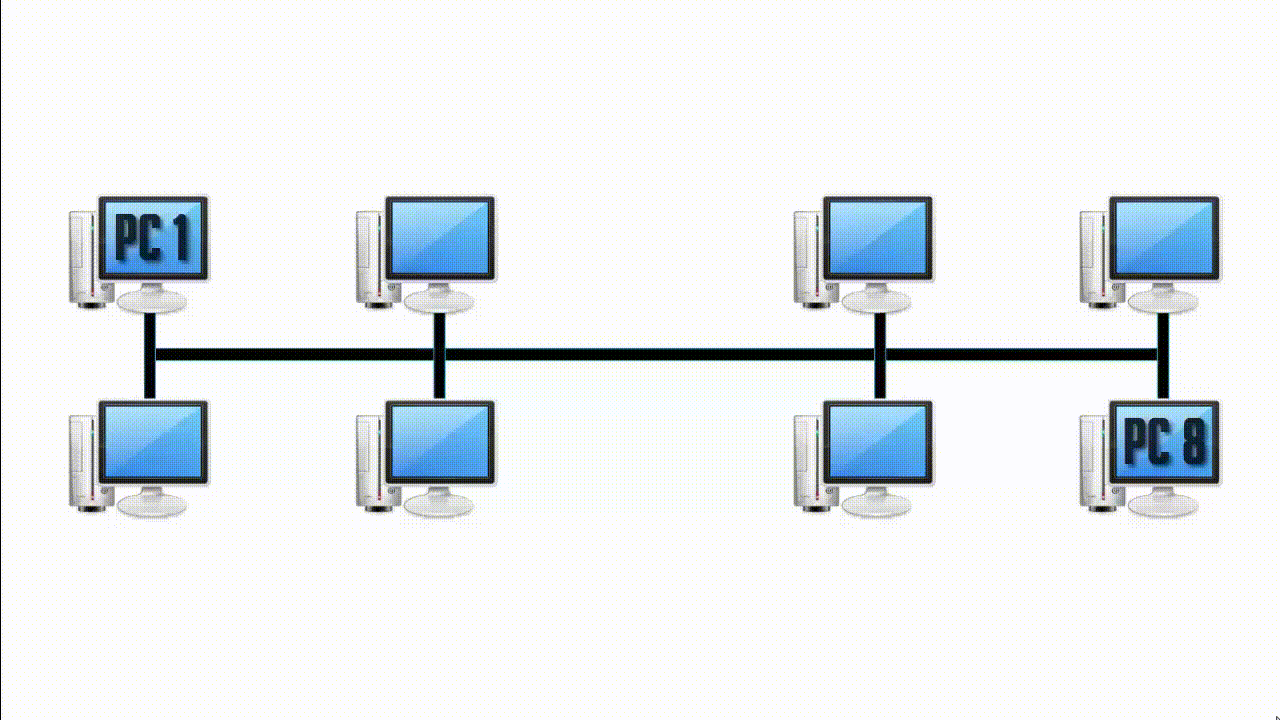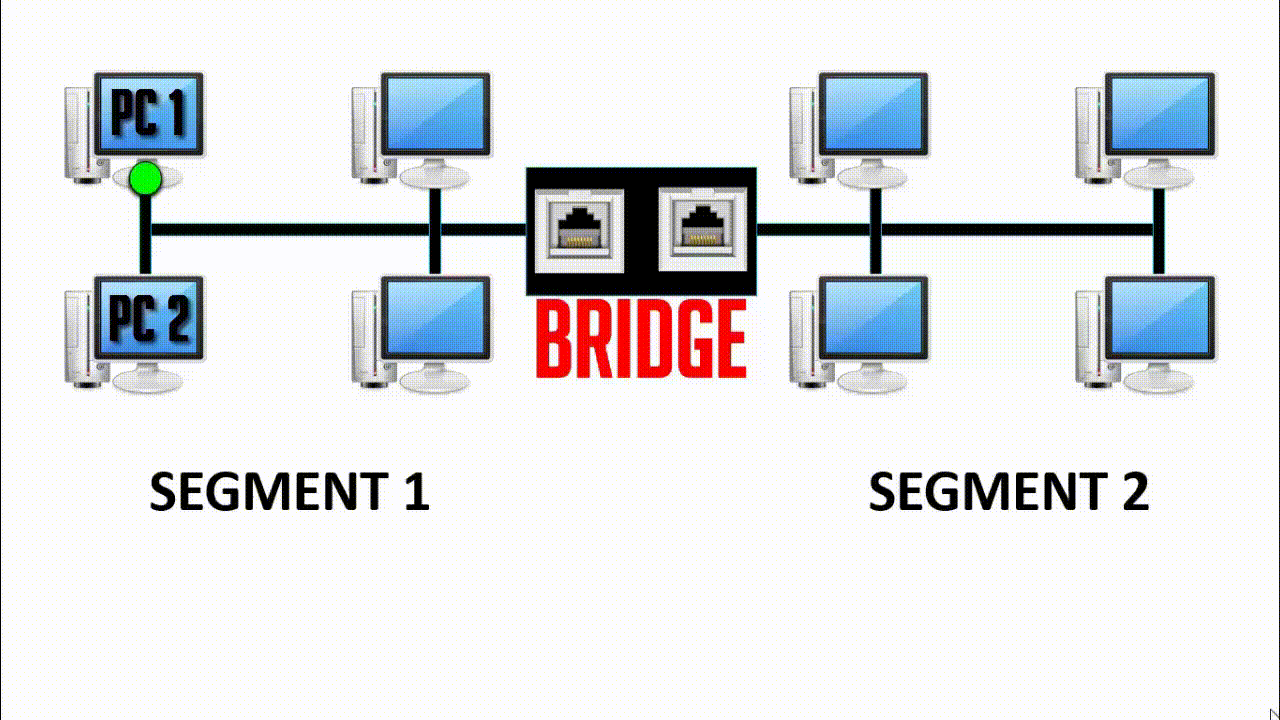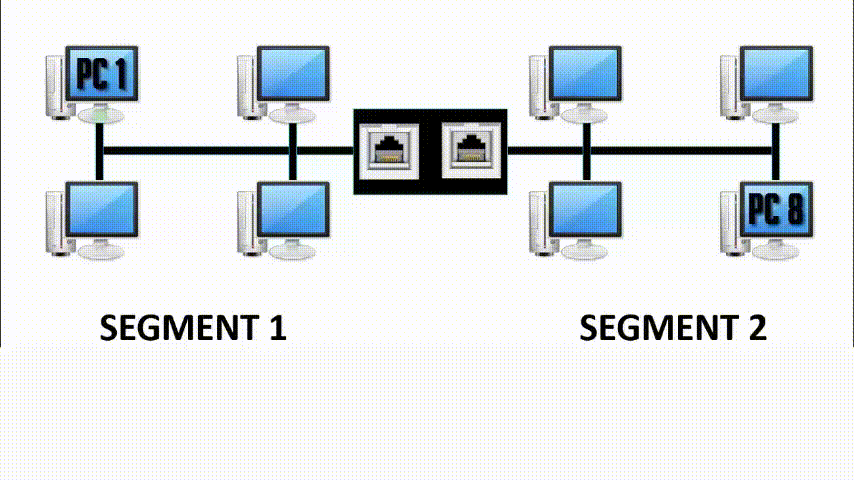What is Bridge in Networking
Bridge in networking divides a LAN into multiple segments. Bridge basically works in a bus topology. As mentioned in below example, In bus topology the time PC 1 wants to send data to PC 8, it broadcast the data to all the connected devices in a network and like this, it creates lots of traffic. So, from overcoming this problem we are using a networking device bridge. At the end of this post, I have also explained the functions of bridge in networking, its characteristics and how bridge it works.
How Bridge works in Network
Bridge in networking divides a LAN into two segments (Segment 1 and Segment 2) and stores all the connected PC’s MAC address into its table. Let’s take an example, Here PC 1 tries to send data to PC 2. Data will first travel to the bridge. The bridge will read its MAC address and decide whether to send the data to segment 1 or segment 2. Hence, the PC 2 is available in segment 1 means bridge will broadcast the data only in segment 1 and excludes all the PCs connected in segment 2. Like this bridge reduce the traffic on a computer network.

Let’s take one more example. As mentioned in the below picture, PC 1 is trying to send data to PC 8. So, the data will first travel to the bridge. The bridge is going to read it’s MAC Address table and find whether PC 8 belongs to Segment 1 or Segment 2. Hence, the PC 8 is in segment 2 bridge will broadcast the data in segment 2 and excludes all the PCs connected to Segment 1. So, this is how the bridge works and reduce traffic in a computer network.

Functions of Bridge in networking
- The bridge is a networking device which is used to divide LAN into multiple segments.
- Bridge works under data link layer on OSI model.
- It stores the MAC address of PC available in a network.
- The bridge is used to reduce network traffic.
What is Bridge in Networking | How Bridge works | Functions of Bridge | Video Tutorial
Advantages and Disadvantages of Bridge in networking
Features of Bridge in Networking | Bridge Advantages and Disadvantages


